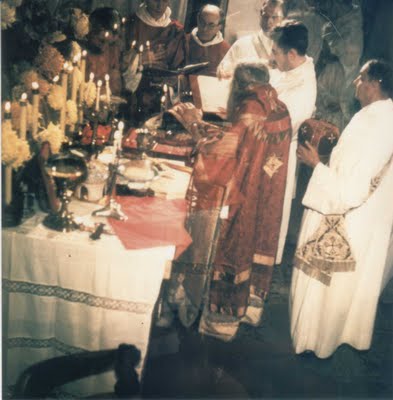 Saint John (Maximovitch) of Shanghai celebrating the Western Rite with Western Rite Orthodox in Paris.
Saint John (Maximovitch) of Shanghai celebrating the Western Rite with Western Rite Orthodox in Paris.
In recent years, some Orthodox jurisdictions in the United States and Great Britain have accepted whole parishes that converted from Anglicanism or Catholicism to Orthodoxy. These few parishes have the unique distinction of providing Orthodox services in the "Western Rite"—high Church services somewhat rewritten to adapt to the Orthodox cycle of services. A deacon of the Orthodox Church, Eastern Rite speaks in defense of this practice:
For over a century, the question of the Western Rite within the canonical Orthodox Church has been one of tremendous debate. Many Orthodox Christians of Western ancestry find within it a home, an answer to their deepest longings for a “rebaptism” of Western Christianity, and an opportunity to draw Western Christians back into the fold of the True Church. Others see the Western Rite as something foreign, misleading, and dangerous. These see the Western Rite as an innovation, and even (possibly) heretical.
What, though, are we Orthodox, to think of the Western Rite? Is it dangerous and wrong, or is it holy and good? What is the substance of the objections which well-intentioned Orthodox people have, clergy and laity alike? In what follows, I will look at several frequent arguments which are utilized in the opposition to the use of the Western Rite. I will examine them, and will answer them, not only from a Western Orthodox perspective, but also with honest evaluation from Eastern positions.
I will apologize here at the outset for the blunt, and possibly even polemical nature of much of what is said here. However, as our culture quickly descends into a politically correct world, where no one says what he or she actually means, bluntness is sometimes needed to make a firm point. Forgive me, a sinner, for the sake of Christ.
The Western Rite is Simply Reverse Uniatism
Perhaps the most frequent objection to the Western Rite movement is that it is simply “reverse Uniatism.” Of course, as many of us know, the Unia, or the Eastern Catholics, are those groups of people in historically Orthodox lands who, under political pressure, came under the Roman Pope, while retaining their Orthodox liturgical rites.
The claim that the Western Rite Churches are simply Orthodox Uniates is not only untrue, it shows something of a problematic ignorance of what the Unia actually is. First, Uniate Churches are former Orthodox bodies, which came under Rome for reasons which were mainly political, not religious in the least, and most of the time this union was forced by political leaders.
Further, the Uniate Churches (i.e.; the Ukrainian Greek Catholics, Melkites, Ruthenians, etc…) do not hold the same theological views as the Roman Church on many issues. Most notably, Uniates are not required to say the “filioque” in the Nicene Creed, and do not hold to Papal Supremacy in the same way that their Roman counterparts do. Rather, they hold to a view of the papacy that we Orthodox would, most likely, agree with, that does not coincide with the theology of their Roman brethren. Further, their theological views on the Sacraments are also completely different, such as the differences in theology and practice around Baptism, Chrismation/Confirmation, and first Communion.
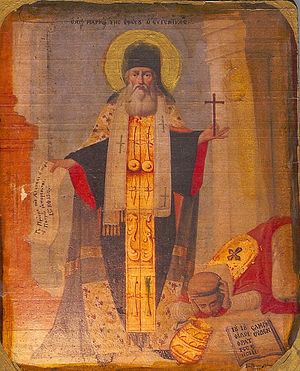 St. Mark of Ephesus, a pillar of Orthodoxy against false union with the Latins, who is, strangely enough, venerated by Eastern Rite Catholics
St. Mark of Ephesus, a pillar of Orthodoxy against false union with the Latins, who is, strangely enough, venerated by Eastern Rite Catholics
From viewing only these basic issues, it is fairly obvious that, even though they may be under the same papal umbrella, the Roman Church and the Eastern Catholics do not hold the same faith. The Western Rite, however, cannot fall under the indictment of being called “reverse” Uniates. In order for this to be true, the Western Rite groups would have to enter under the care of Orthodox Bishops, while maintaining not only their liturgical rites, but also their own heterodox theology, while claiming that only submission to an Orthodox Bishop is necessary for being part of the Church.
The Western Rites, however, are required to embrace, hold, and proclaim the same faith, the same theological positions, and the same sacramental theology, as the rest of the Orthodox world. In reality, the Western Rite is, simply put, Western Orthodoxy. This Western Orthodoxy is not opposed to Eastern Orthodoxy, but, rather, in harmony with it.
Whatever individual parishes might hold or practice that may be in error (which, of course should be dealt with by their respective bishops), the movement as a whole, and all the Western Rite Vicariates in the Canonical Church are required to hold the Orthodox Catholic Faith. Thus, the charge of “reverse Uniatism” falls flat, and is completely false.
The Western Rite is not part of our tradition/it’s not a living tradition
Another very frequently utilized argument against the Western Rite is that it is not a part of the living tradition of the Orthodox Church. The argument usually goes something like this: The Western Church left the historical Christian faith at the time of the Great Schism, and her liturgical rites, which have changed over time, have lost their Orthodox context. Thus, they have not been celebrated within the Orthodox context for a period of time deemed long enough to exclude their Orthodoxy. Therefore, so the argument goes, the Western Rite is not a “living” tradition.
However, this argument raises, by necessity, an essential question, which must be answered. This question is: what is a “living” tradition? For Orthodox opponents of the Western Rite, a liturgical rite must be continually celebrated and, relatively, unaltered for most (or all) of Christian history to be considered “living.”
However, this is not a Christian definition of anything being “alive.” What makes something alive is the presence of Christ, the working activity of the Holy Spirit. If something exists within the Church, and is blessed by the hierarchy, and celebrated by the faithful, in accordance with the True Faith, then it is alive.
Would any of us argue that the Liturgy of the Pre-Sanctified Gifts, or St. Basil’s Liturgy, are not part of the “living” tradition of the Church during the periods of the year when they are not in use? And further still, the Western Rite liturgies have a wider modern use than the Liturgy of St. James, but those who would discredit the Western Rite see no problem with the idea that this liturgy is “alive.”
What makes a liturgical form or rite “alive” is that it is celebrated, that it is used in the Church for the worship of God, and the feeding of His people with the sacraments of the Church. Whether or not something has had continuous use since the time of the Apostles to the present is not a measure of life, because we need only look at some of our own Orthodox parishes and see that though the correct “rite” and theology may be present in an exterior manner, while the parish itself is dead or dying because those rites have not become an interior reality. This is possible in the East or West. There is no distinction here. If the celebration of these liturgical rites brings about a true experience of God, this is the true mark of their validity.
We must remember that we worship the God Who is invested in giving life to the dead. Why would we say that He cannot and would not breathe new life into an ancient Liturgy again? Rather than making some historical or philosophical argument about “living tradition,” we need only to look with our eyes (both physical and spiritual), and see if something is alive.
Further, to say that the Western Liturgies are not “our” tradition (meaning, of course, Orthodox Tradition) is to say that the liturgical rites celebrated by the Western saints of the first thousand years of Christianity were invalid. The great champion of the Western Rite of the twentieth-century, St. John the Wonderworker, of Shanghai and San Francisco, has told us clearly:
Never, never, never let anyone tell you that, in order to be Orthodox, you must be Eastern. The west was fully Orthodox for a thousand years, and her venerable liturgy is far older than any of her heresies.
This great saint saw the Orthodoxy in these rites, and he saw past the coating of heretical doctrines that have become associated with them since the Schism. He proclaimed that, though the churches may have fallen into error, the liturgy is sound. Therefore, if the liturgy is sound and true, then it is Orthodox.
Are there “orthodox” Traditional Catholics, Anglicans, or Lutherans left?
One frequent question that is raised is the issue of Traditional Catholics, Anglicans, and Lutherans who are conservative in their theology, but still remaining in their respective confessions. The issue usually is phrased something like this; “I could understand the Western Rite if there was a large group of Irish Catholics in the 1950’s that wanted to become Orthodox. But nowadays, those that are still Roman Catholic, Anglican, or Lutheran don’t remember those rites. So they should just come into the Byzantine Rite if they want to become Orthodox.”
The first point that needs to be raised is in terms of Anglicans and Lutherans. Generally speaking, those that leave these confessions to become Orthodox are coming from very “High Church” backgrounds to begin with. We must remember, that while certainly having “low Church” groups within these confessions, Anglicans and Lutherans are the most liturgical of all Protestant groups, and generally take their liturgy very seriously.
The Anglicans, in particular, have an incredibly deep sense of liturgy that is far more ancient in practice and origin, and deeper in reverence, than the modern Roman Catholic Rite, and is, in fact, quite beautiful. So in terms of “remembering the rite,” Lutherans and Anglicans don’t really need to remember it, they live it every time they step into a church.
Some would also say that the conservatives in the Lutheran and Anglican Communions are all now either Roman Catholic or Orthodox, and would ask of any remaining in these groups, “why would you come to Orthodoxy now, and not ten or twenty years ago.” The answer to this is clear: faithfulness. Many Anglicans, Lutherans, or even Presbyterians or Methodists, having been raised in these confessions, remain faithful to their churches, even though these churches are no longer faithful to them.
When these people decide to leave, regardless of the timing, to come to Orthodoxy, it isn’t for us to ask “why now?” It is for us to say, “thank God.” Further, if these people were that faithful to confessions which were running away from their historical faith, how faithful, then, will they be to Holy Orthodoxy when they find it! These are the people that we want in our parishes! These faithful give up so much to leave all they know, and it is possible for the Orthodox to bring them home, and embrace them, while giving them their liturgical forms that they know.
While it must certainly be conceded that the modern Roman Catholic liturgy is a far cry from the beauty and splendor of their former Mass (the liturgy normally used in Western Rite Orthodox parishes), we must also note the tremendous growth in Traditional Catholic parishes across the U.S. especially. Indeed, in the last 20 years, the parishes in the American Roman Catholic Church that have seen the most consistent growth have been those that celebrate the Latin Tridentine Mass daily. This growth has not been older people coming for nostalgia, as one might expect. Rather, these parishes are filled with twenty and thirty-somethings, who are longing for their roots.
What makes the Western Rite so necessary are exactly these facts. There are many High Church Protestants and Traditional Catholics who are searching for their Orthodox Christian heritage, and their own confessions are leaving them behind. In the case of the Traditional Catholics, in many cases they are actually treated like second class, with the new Charismatic-driven Novus Ordo parishes receiving favor.
It is precisely these people, these traditional conservative members of these liturgical bodies, that we must show the light of Orthodoxy to. Indeed, we can offer them something incredible: their deepest longing for participation in the form worship that their Western ancestors used, within the context of the True Faith of Jesus Christ. This is a tremendous gift, and we would be foolish not to use it, because it could, theoretically, change the world, and, for many Christians, heal the Schism, one Baptism at a time.
The Western Rite Liturgies are too Patri-centric
A very common objection that is used by Western Rite detractors is the idea that the Western Rite Mass is too “Patri-centric.” To put this another way, it is said that the prayers of the Western Liturgies are almost entirely directed at the Father, at the expense and negation of the Son. While this may or may not be true, the idea behind it is an interesting one.
It is often said by Eastern Rite objectors, “we pray ‘to Christ our God,’ they [the Western Rite] pray, ‘through Christ our Lord.’” In saying this, they are making the claim that Western Rite prayers are somehow deficient, and that God will not answer them, or some other such nonsense.
What we often forget in this line of argument is that we Byzantine Rite Christians do not pray exclusively to Christ in our Liturgies either, and there are even Patri-centric prayers in the Liturgy of St. John Chrysostom. The most obvious example is actually in the most solemn moment of our Liturgy: the Anaphora.
As we progress through the Liturgy, and approach the Mystery of mysteries, the prayer that is utilized is not a Christo-centric one, but rather, Patri-centric;
It is meet and right to sing of Thee, to bless Thee, to praise Thee, to give thanks to Thee and to worship Thee in every place of Thy dominion. For Thou art God ineffable, inconceivable, invisible, incomprehensible, ever-existing and eternally the same, Thou and Thine only-begotten Son and Thy Holy Spirit. Thou it was who brought us from non-existence into being, and when we had fallen away, didst raise us up again, and didst not cease to do all things until Thou hadst brought us up to heaven and hadst endowed us with ‘Thy Kingdom which is to come. For all these things we give thanks to Thee, and to Thine only-begotten Son and to Thy Holy Spirit; for all things of which we know and of which we know not, whether manifest or unseen; and we thank Thee for this liturgy which Thou hast found worthy to accept at our hands, though there stand by Thee thousands of archangels and hosts of angels, the Cherubim and the Seraphim, six-winged, many eyed, who soar aloft, borne on their pinions, singing the triumphant hymn, shouting, proclaiming and saying: Holy! Holy! Holy! Lord of Sabaoth! Heaven and earth are full of Thy glory! Hosanna in the highest! Blessed is he that comes in the name of the Lord! Hosanna in the highest!
Further, as our Liturgy is beginning, the very first prayer of the priest before the Altar is not a prayer to Christ, but a prayer to the Holy Spirit, the “O, Heavenly King.”
Now, one might bring forth an objection here saying, “we concede that some prayers in the Eastern Liturgy are not Christo-centric, but in the Western Church, all the prayers are Patri-centric.” Even this, though, isn’t true. While the great majority of Western Rite prayers are, indeed, directed to the Father, there are many exceptions.
First, one of the first moments of the Mass in the Western Rite is the “Kyrie,” in which the Priest and people antiphonally chant together, “Lord, have mercy. Christ, have mercy. Lord, have mercy.” Indeed, further, in the prayers just before Communion, the Western Liturgy gives us three beautiful prayers to Christ, the first of which says:
O Lord, Jesus Christ, Who didst say to Thine Apostles: Peace I leave you, My peace I give to you: look not upon my sins, but upon the faith of Thy Church; and deign to give Her that peace and unity which is agreeable to Thy will: One God, Who livest and reignest unto ages of ages. Amen.
Finally, it is simply a fact that, in the Western Church, the formula for prayer has always been Patri-centric. It is curious that this was not a problem for the Eastern Christians when they were in communion with Rome before the Schism, but that some Orthodox Christians would use this as an objection to the Western Rite now.
Modern Orthodox Theologians Oppose the Western Rite
A further argument used against the Western Rite is that modern Orthodox “theologians” and scholars argue against its use. Among these are names such as Fr. Alexander Schmemann, Metropolitan Kallistos [Ware], and others. These scholars will make varied claims to historicity, Roman Catholic innovations, post-Schism devotions, and many other objections from an academic position.
This argument, though, can be easily deflected, however, in answering the following question; do academics determine Orthodoxy, or do the saints? The answer, of course, is the saints, or more specifically, the living activity of the Holy Spirit working within the saints of God in His Church, in accordance with Sacred Tradition.
We can plainly see that no matter how many “academics” may argue against the use of the Western Rite, they must stand up against the saints who supported it, including St. John Maximovitch, St. Tikhon of Moscow, St. Nicholas of Japan, and St. Raphael of Brooklyn, among others. There are also many other Orthodox academics, scholars, and leaders in the Church that support the Western Rite, men such as Vladimir Lossky, Patriarch Sergius I of Moscow,[1] Metropolitan Anthony (Bloom), Metropolitan Philip (Saliba), and Bishop Basil (Essey) of Wichita.
Will we, embrace the same scholastic mindset that we criticize in the Western Churches, and allow our faith and practice to be determined by academics? Or will we follow the testimony and lived experience of the saints? The answer is clear; if the saints of God and various Orthodox Synods have accepted something, there ends the matter. There is no more room for discussion on the acceptance of the Western Rite as something Orthodox. It has been proclaimed so, and has been accepted, and must be given every chance to grow and succeed.
The Western Rite incorporates non-Orthodox elements into the life of the Church
Another frequent argument is that the Western Rite brings into Orthodoxy elements of Church life that are not Orthodox in their origin. This can range from liturgical practices, paraliturgical devotions, and even vestments or clergy attire. This accusation is very often flung at Western Rite Orthodox by, especially, more “hardcore” or traditionalist Orthodox Christians. They argue that the introduction of certain Western elements into Orthodoxy pollutes the purity of Orthodoxy, and should be avoided by the suppression of the Western Rite.
One can only comment that these detractors are several centuries too late to make this argument. There are, indeed, many elements that exist within Orthodoxy that are not only of non-Orthodox, but even non-Christian origin. Aside from our theological language, with terms like hypostasis, which come from pagan Greek philosophy and are decidedly non-Christian, the average Orthodox parish, in America and elsewhere, has countless Western elements, whether they are aware of them or not.
Whenever we walk into a church and hear four-part music, see pictorial stained glass windows, meet a priest in a clergy collar or vestments that are in a particular “seasonal” color, these are western influences. These elements are now commonplace in our Orthodox Churches, and we don’t even consider that they are of Roman Catholic origin. We take for granted that they are Orthodox, and that they are a part of the worship of the Church.
Further, to answer those who are of a more “traditionalist” bent, we should point out that there are elements that are considered “traditionally” Orthodox that are not even Christian in origin. Some of these elements are very interesting in this regard, because some argue that they are the very markers which determine how an Orthodox priest should look, in terms of appearance.
Take for example, the riassa, and the wearing of long hair and unkempt beards, especially by non-monastic clergy. These are often considered the foundation of how an Orthodox clergyman should appear in public. There is a huge problem with this, however, as they are not Christian, but Islamic in origin. These were the markers of government officials during the Muslim Ottoman Turkish Empire, a period of time in which we, as Orthodox Christians, were subjugated under Islamic rule.
The same is true of the kamalavkion, or klobuk, as it was a Turkish judicial hat, as well as the sakkos and mitre, worn by bishops in the Liturgy, which were clothes worn by the Byzantine Emperors, and not historically by bishops until the Ottoman conquest. These items, worn today by all Orthodox clergy everywhere, bishops and priests, are not even Christian in origin, and, in terms of the riassa, long hair, and the kamalavkion, are even signs of Muslim domination over the Church, and yet we continue to wear them, and call them signs of the Orthodox priesthood, because they have been blessed by their use in the Church.
The traditional attire of an Orthodox priest is a simple cassock, black for monastics, and in various colors for married clergy, a beard, which is neatly trimmed if he lives in a city or town, and short hair, which is the Byzantine clerical tonsure. This is our true Orthodox heritage, but we ignore it in favor of Islamic norms. It is a strange curiosity that those who would argue against the introduction of Western Rite elements in the Church are the same people who embrace Western Christian, and even Islamic elements to their Liturgy and Church life.
Further, wherever the Orthodox Church has found Herself, She has embraced pieces of the local culture, and “baptized” them. Here in America, in Alaska, the Church came to the natives and permitted them to hold to certain rites and ceremonies (i.e.; spirit houses, smudging ceremonies) which are of animistic tribal pagan origin, but were baptized, and are now considered fully Orthodox. This practice is not limited to native Alaska, but can be found all over the Orthodox world.
Finally, the Julian calendar, which is a sticking point of discussion to so many in the Orthodox Church, is not of Christian origin, but of pagan beginnings. Will we continue argue along these lines, splitting hairs, and making nonsensical arguments? Or, will we be truthful with ourselves, and look at the origins of what we do, and simply acknowledge the truth, that we have taken what is good in the world around us, and baptized it, to the glory of Almighty God.
Only the Byzantine Rite is acceptable for use in the Orthodox Church
An absolutely ludicrous and absurd claim, made by detractors of the Orthodox Western Rite, is that only the St. John Chrysostom, St. Basil, St. James, and Pre-Sanctified Liturgies are acceptable for use in the Orthodox Church. This idea is a complete innovation, and one cannot even be claim to see its origin in the Great Schism, but rather long after.
In actuality, the Orthodox Church had its own local liturgical rites in various geographical regions throughout the East. These included a distinctive Antiochian Rite, and Alexandrian Rite which were ultimately suppressed in favor of the Constantinopolitan Rite. This plurality of rites existed long after the Schism with Rome, and elements of these historically Orthodox rites can be seen in various liturgical variations throughout the Church.
There is no argument for the Byzantine liturgical primacy other than a pride, and historical ignorance, either innocent or deliberate. What is essentially being said by this argument is that God Himself only honors that Liturgy that is celebrated by the Byzantine Church in the modern era. This is an argument that negates not only the liturgical validity of every Western saint that the Orthodox commemorate, but also the saints of ancient Antioch, Syria, Alexandria, and others.
Is this what we really believe? Of course it isn’t. Every Orthodox Christian acknowledges the Orthodoxy of St. Gregory the Great, St. Benedict of Nursia, St. Cyril of Alexandria, St. Moses the Ethiopian, and all the other non-Byzantine saints. Why on earth, then, do we venerate their sainthood, but dismiss the Liturgies that formed them into saints?
Another factor here is a denial that the liturgical expression of the Byzantine Rite has changed, believing that it has been static since its beginning. This is, of course, ridiculous. Liturgical formation and evolution over time is simply a documented fact. Let us note an extremely early example; the difference between epicleses in the Liturgy of St. John Chrysostom and that of the Didache, or that used by the most ancient Church. They are very different, and are examples of liturgical development within the Orthodox Church. We could also point to doxologies and liturgical prayers in the Holy Scriptures, in the letters of St. Paul and elsewhere, that were used in the early Church and are no longer in use by the Orthodox Church. There is nothing wrong with this. Rather, it shows the maturing of the Church.
Finally, we should also look back to our not-so-distant past, to the post-Revolution Russians living in the diaspora. Specifically we should look to France, where the Russian Church, under the leadership of St. John Maximovitch, saw it as part of their duty to restore the Gallican Rite Liturgy, which is the indigenous Orthodox Liturgical rite in France (Gaul). St. John and his followers obviously did not cling to any notion that only the Byzantine Rite liturgies were suitable for Orthodox worship.
Let us call a spade a spade, and simply answer this criticism for what it is: ridiculous. This kind of argument, one that dwells on a static exterior, is what led to the Old Believer schism in the Russian Church, and there is not a single one of us that does not lament what a horrible tragedy that was. We must remember our brothers and sisters in Christ, honor their cultural differences in which truth can be found, as Orthodoxy has historically been wont to do. In doing this, let us see true Orthodox diversity as a blessing from God, as a mark of His Creative energies working through men in different places and in different times.
The Western Rite is Divisive
There are those that argue that the existence of the Western Rite within Orthodoxy is, by its nature, divisive. They argue that the liturgical variation brought about by the Western Orthodoxy causes an undue separation between the Western Rite Orthodox and their Eastern Rite brethren, driving a wedge in Orthodox Unity.
This argument could conceivably have some traction, because it has been manifestly true. However, the divisive attitudes that have emerged have not been a result of the Western Rite itself, nor have they usually been manifested in Western Orthodox Christians themselves. Rather, these attitudes are generally the result of a lack of any attempt to truly understand the Western Rite at all.
Western Orthodox Christians are our brothers and sisters in the Orthodox faith, not our enemies or competitors. What we see in this line of argument is, indeed, nothing less than the rampant phyletism that exists within the Orthodox world. This divisive attitude does not exist only between Eastern Rite and Western Rite Orthodox, but between Greek and Russian, cradle and convert, and the many “warring” jurisdictions in the diaspora which shamefully allow a non-canonical Church structure to continue because of pride and power.
Let us, again, be honest with ourselves. If the Western Rite is divisive, it is so because we have not yet obtained a heart that is formed in Christian love and charity. Differences in liturgical ceremony do not cause this kind of division of themselves. What does cause divisiveness is pride, and believing that what we are doing is the only “right” way. In being truly honest with ourselves, we must admit that the notion that there is liturgical uniformity, even within a single national Church or jurisdiction, and even from parish to parish in a single diocese, is complete fiction. Saying otherwise is simply not honest.
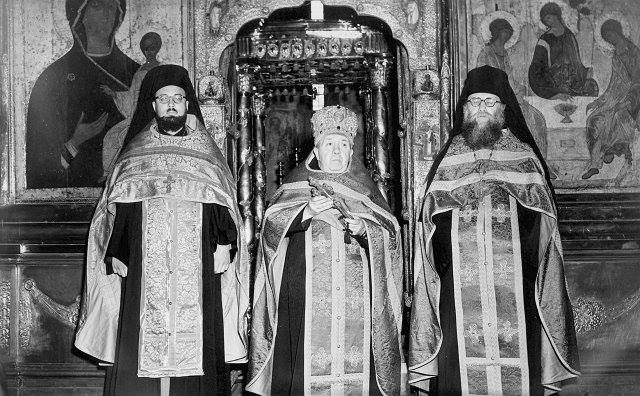 A celebration in the 1940's in the church of the Holy Trinity at the Trinity-St. Sergius Lavra with Hieromonk Denis (Chambault) of the Western Rite community in Paris
A celebration in the 1940's in the church of the Holy Trinity at the Trinity-St. Sergius Lavra with Hieromonk Denis (Chambault) of the Western Rite community in Paris
What does the Western Rite have that the Eastern Rite doesn’t?
This question, which also has been asked often, I have intentionally placed at the end of my discussion. This is a difficult question to answer due to the fact that it is usually framed in such a way so that however the person may answer, they can be accused of saying that Orthodoxy is lacking in some way.
I think, rather than thinking in terms of one liturgical expression lacking in something, that it would be better to point out the strength that the Western Liturgy brings to Orthodoxy. Simply put, this strength is one thing: the presence of silence.
The Byzantine Liturgies are beautiful, moving, majestic, and they draw us into the eternal now, there is no question about it. But when we examine the liturgy of the West, we find that the strength which it brings, besides being equally beautiful and majestic, is the role that silence plays in the Liturgy.
We cannot over-emphasize the role that silence (hesychia) plays in Orthodox spirituality, and we have saints who are hesychasts who devote their entire life to seeking and experiencing God in cultivation interior silence. What the Western Rite offers us is a change, during the Holy Liturgy, to focus on exterior and interior silence. Indeed, there are entire sections of the Mass that are celebrated in complete, or nearly complete silence.
For example, during the preparation of the Holy Gifts, which we in the East call Proskimedia, and which happens during the Liturgy in the West, is done in silence. Also, during the consecration of the Mystery, the only sound is the low voice of the priest, praying over the gifts before their elevation. This allows the people to silence themselves, and to focus on the coming of Christ in the Eucharist, bringing about the possibility for a preparation of the heart which is without distraction.
It would be a mistake to allow this focus, which is so central to our faith as Orthodox, to fade away, and worse yet, to ignore it.
Conclusions
We, as Orthodox, must examine ourselves deeply, and gauge whether our objection to the Western Rite, based on any of these arguments (or others), is based on actual fact, or on our own pride. This is a hard truth to consider, but we must consider it. If we are not willing to set aside our own pride and our own preferences for what we think is correct in this regard, then we will not even be able to flee from divisiveness in our relationships with other Eastern Rite Orthodox faithful. How sad this is. We must, as Christians, be better than this. We must examine anything that comes to us on its own merits, on its fidelity to the Apostolic Faith, and not hold our own opinion up as a measure against it.
At the end of the day, the Holy Church has granted the celebration of the Western Liturgies, and has proclaimed them Orthodox. These Liturgies have been celebrated by modern saints of God, who encouraged their use and growth. The Orthodox Western Liturgies encouraged all the Western saints of the first millennium, and fed the faithful with the Bread of Life. Thus, the weight of their merits is incalculable, because they hold, in truth, the experience of Christ of one thousand years, and beyond, into Eternity.
The many Eastern Rite Orthodox Christians who have a tendency to criticize, demean, or even openly persecute the Western Rite usage must re-examine their motives for doing so. If the Western Rite is examined anew and found lacking in Orthodoxy, then let it fall from use. However, if it be sound in doctrine, in practice, and be present in the acclamation and testimony of the saints, then let it not only stand, but also be encouraged, and given means to grow and flourish, that the West may once again stand beside the East in united proclamation of Holy Orthodoxy.
May it be so, for the sake of our Great God and Savior Jesus Christ, to Whom all glory and honor is due, with His Father Who is without beginning, and His All-Holy, Good, and Life-Creating Spirit, always, now and ever, and unto ages of ages. Amen.

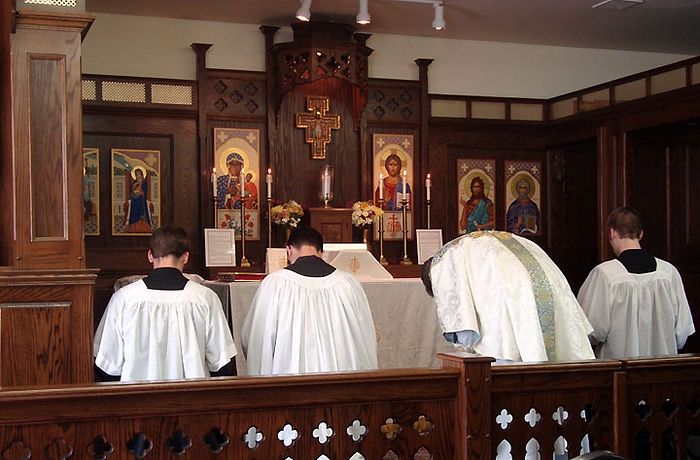

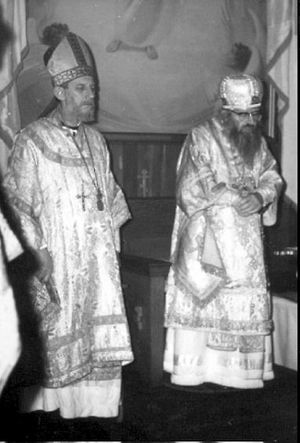

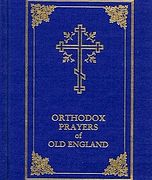
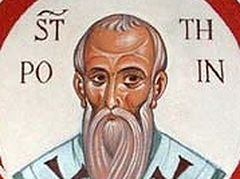
1) "Lord Have Mercy; Christ Have Mercy; Lord Have Mercy" in WR. Is there any such rude addressing of Our Lord as simply "Christ" in ER?
2) Silence in WR: Silence allows the mind to wander, breaking "liturgical momentum" and floating. ER keeps focus, movement, and intensity.
3) Iconography in WR? Where is kiss-Veneration? Violation of 7th E-Council?
http://orthodoxinfo.com/praxis/clergy_hair.aspx
The shaving of beards in the West only began in the 9th century and was enforced by the Synod of Aachen, not surprisingly the same Synod which approved the Filioque. The question of the shaving of beards was also one of the main reasons for the Schism. I am simply shocked to read that the (anonymous) writer of this article believes long beards to be an Islamic (!) importation into the Church. Only one historical remark will illustrate the absurdity of this claim: if long hair and beards is something that only began under Turkish occupation, then how did the practice spread to the Russians, who were converted a good 400 years before Constantinople fell? Clearly the author does not appreciate the incredible struggle that the Greek people led under the Turks to preserve the purity of their faith.
Rdr Andreas: I would tend to agree with Anthony: being born in a generations-old Orthodox family (parents, grand-parents, etc.), in a majority-Orthodox country (Romania, Russia, Greece, etc.), makes you, in a way, to be born Orthodox. (Please note the use of "in a way") :-)
I'm of Romanian origin living on the North American continent and there were times when we couldn't attend a Romanian Orthodox Church on Sundays. We would then go to a Greek or Ukrainian, or Russian Orthodox Church, being able to follow the Liturgy without knowing any word besides Kirie Eleison or Gospodi Pomiluj. And that is because I knew that there's no way a different Liturgy would take place besides the three Liturgies accepted in the Orthodox Church.
I believe this is another face of ecumenism being brought into the Orthodox Church and shoved in our faces.
There's no mention in this article about the Orthodox Church canons and Tradition
Blessings
personally, I really doubt the ten minute baptism, that is not possible in the western rite; and I fail to see how longer makes holier, but that does seem to be a Russian selling point. One would think that being thankful for the baptism of a child would be the main interest, not looking at one's watch to see how long it takes.
But I do respect your honesty, at least people know what type of attacks to expect if they join the Byzantines. In the end, it would appear that Orthodoxy and a single cultural expression will be the rule.
A properly performed Orthodox baptism and chrismation takes around an hour.
But if the adoption of Russian traditions are what makes one an Orthodox, well the Greeks and Arabs must also be out of the club as well.
Also, the so-called western-rite in ROCOR is so Russified, to make it Orthodox, that it is simply a mish-mash frankenrite.
As an Orthodox layman, I attended an Eastern Rite baptism and was shocked. Not only did the baptismal service take place in about ten minutes, but later I realized three or four baptisms had taken place in that time.
About twenty minutes prior to this, when I asked for the priest's blessing, he looked at me shocked. Oh, you're Orthodox? he asked. The priest asked where I was from, and I gave him the name of one of the few Orthodox seminaries in America. He had no idea where or what this was.
Now mind you, this was a few days leading up to Nativity. We were hoping to attend Vespers here but it was canceled for a very Western Christmas pageant.
Personally, my experiences gave the impression of someone playing house, someone fascinated by and perhaps overly attached to Roman Catholic and Anglican sentimentalism.
I'm really not a scholar. The author may well know more than I do, so please forgive me! I see the anonymous deacon is deeply pious and well-spoken. Why remain anonymous?